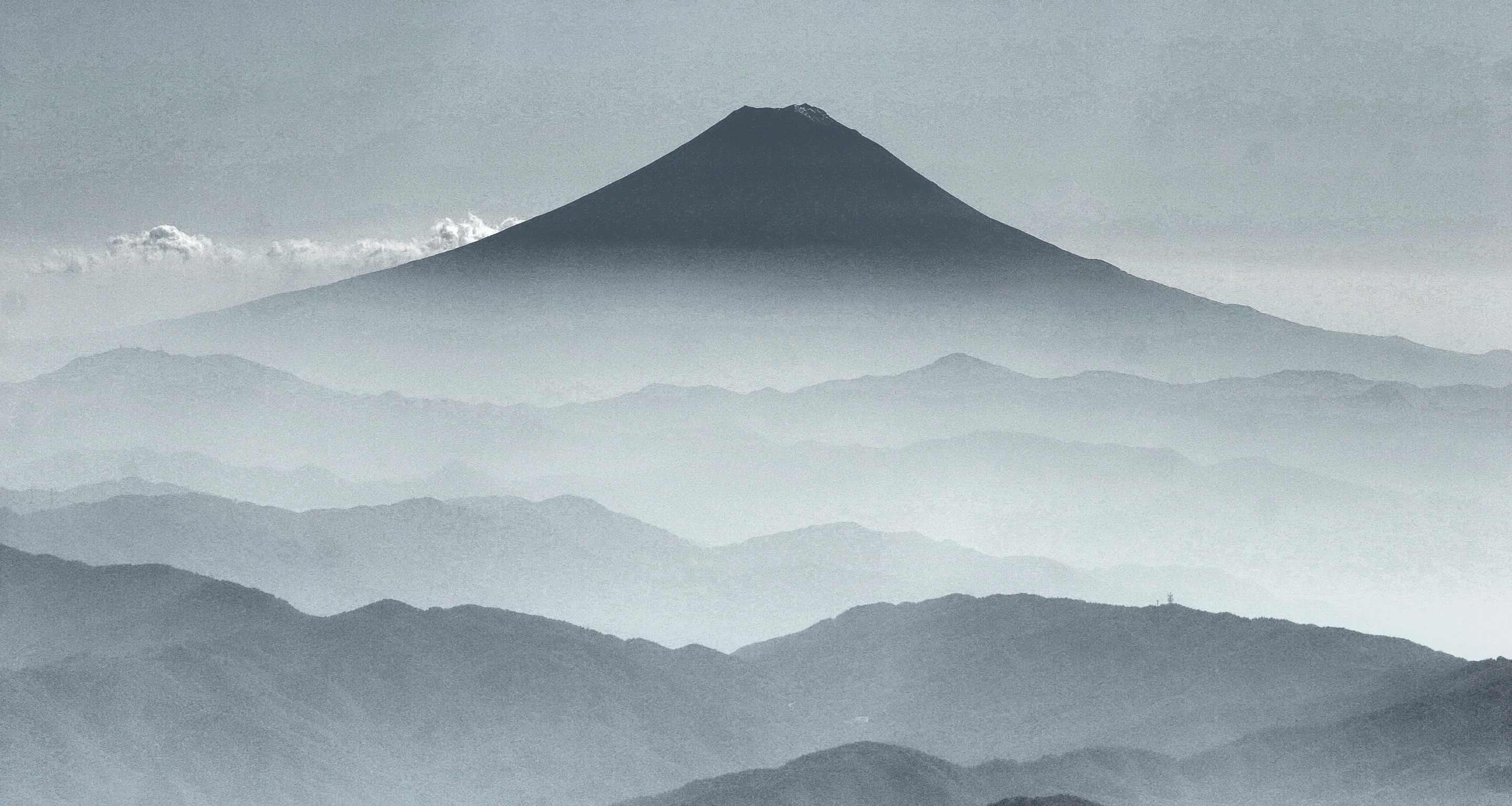
FUJI-KO
A journey to bring the spirit of Fuji-ko into the present day
During the Edo period, the common people were enthusiastic about worshiping Mt. Fuji, and so we have revived the pilgrimage journey taken by Fuji-ko believers for the present day. Experience the culture and spirit of Fuji-ko at the Oshi house, and walk with an official guide along the Yoshidaguchi trail, the only one of the many mountain trails that allows you to experience the climb from the base to the summit as it was in the past. By following the example of the Edo period monks and going to “the sacred place in the sky”, you may be able to experience the "rebirth" sought by the Fuji-ko pilgrims.
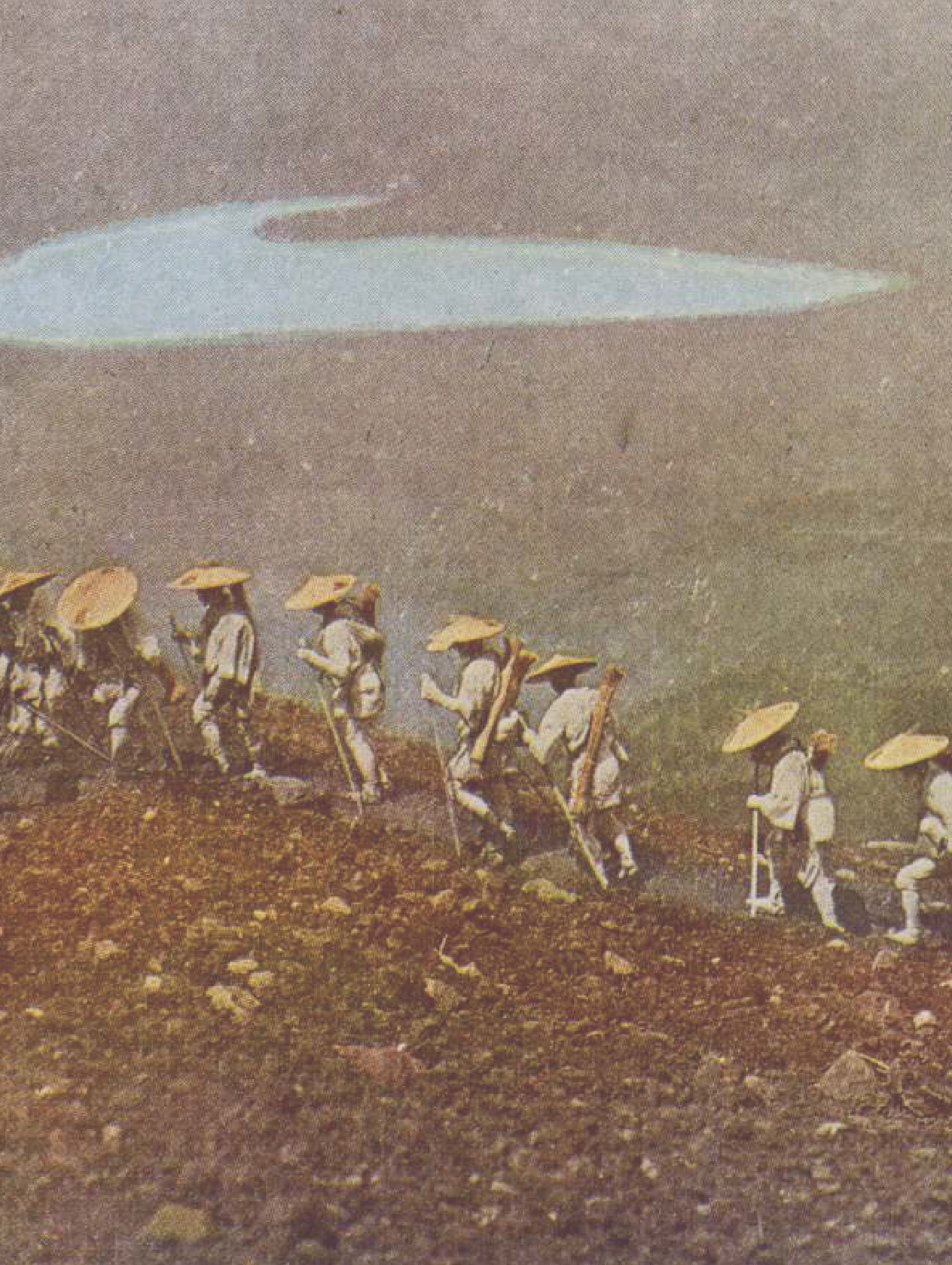
Special Experience
To preserve the traditional culture of Fujiyoshida
for future generations...
In 2013, Mt. Fuji was registered as a World Heritage Site as an "object of faith and a source of artistic inspiration." This was in recognition of the beauty of its natural scenery and its uniqueness as a mountain to climb, as well as its value as a symbol of religious and natural views and faith that have been cherished by the Japanese since ancient times. However, most climbers now visit Mt. Fuji for sports and leisure, and it has not yet been fully recognized as a cultural heritage site. In particular, the culture and tradition of "tohai," or worshipping Mt. Fuji as a sacred object, is being lost.
In response to these challenges, we created the "Reiwa version of Fujiko," a modern interpretation of the Fujiko faith culture. This content proposes a new way to enjoy Mt. Fuji where tourism and faith coexist, allowing you to experience the essential and cultural value of Mt. Fuji while climbing. Experience the unknown charms of Mt. Fuji and enjoy a special moment away from your everyday life.
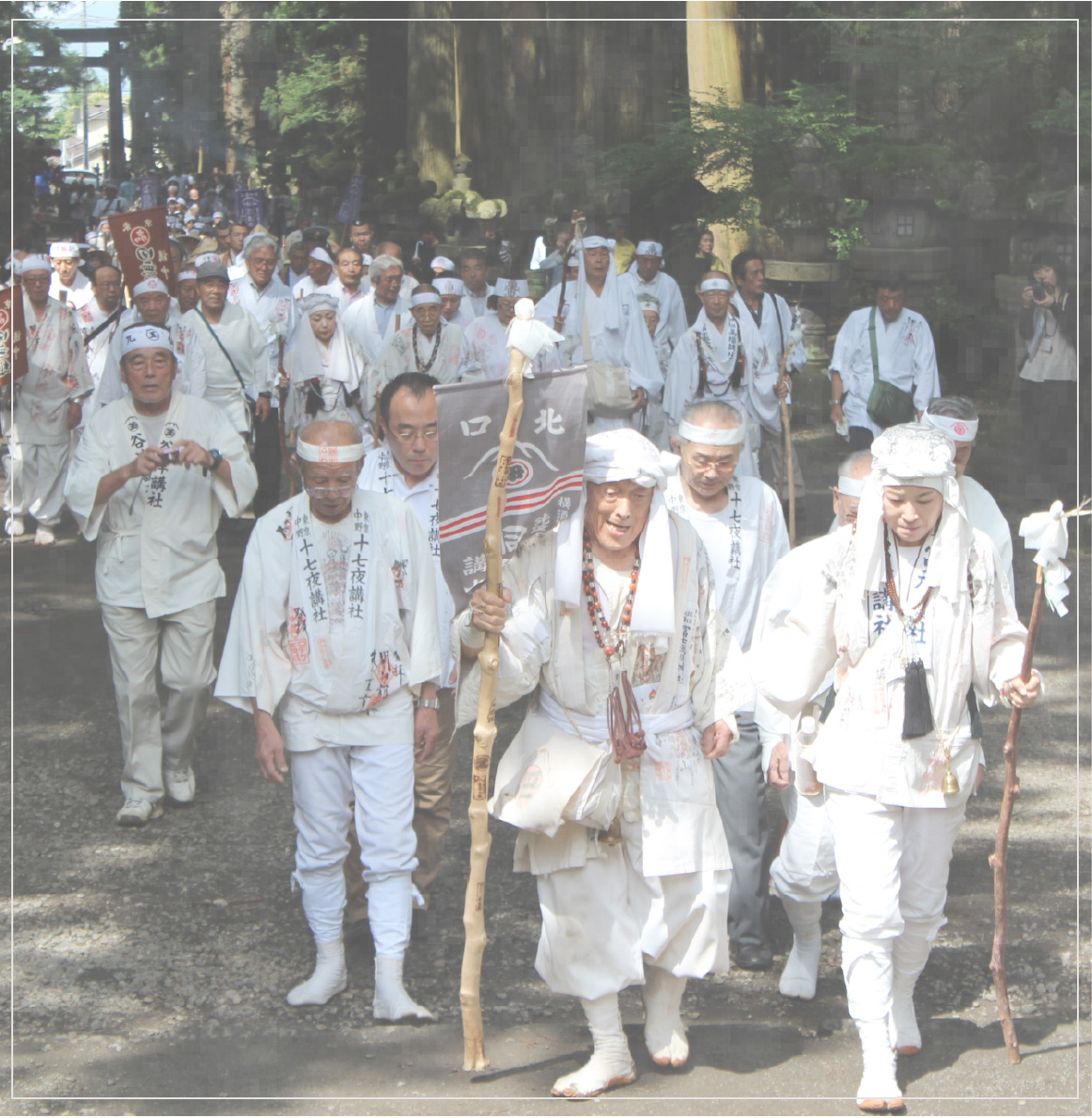
The folk belief of "Fujiko," which flourished during the Edo period, still thrives in Fujiyoshida City. Fujiko worshippers regard Mount Fuji as a sacred mountain and purify their mind and body by climbing it. Many groups from around the country have visited the area. Kitaguchi Hongu Fuji Sengen Shrine, located in the city, is a central presence and has long welcomed believers as the starting point of the mountain trail. Houses known as "oshi," which served as lodgings for believers, remain in the city, conveying the religious culture and history of human interaction from that time.
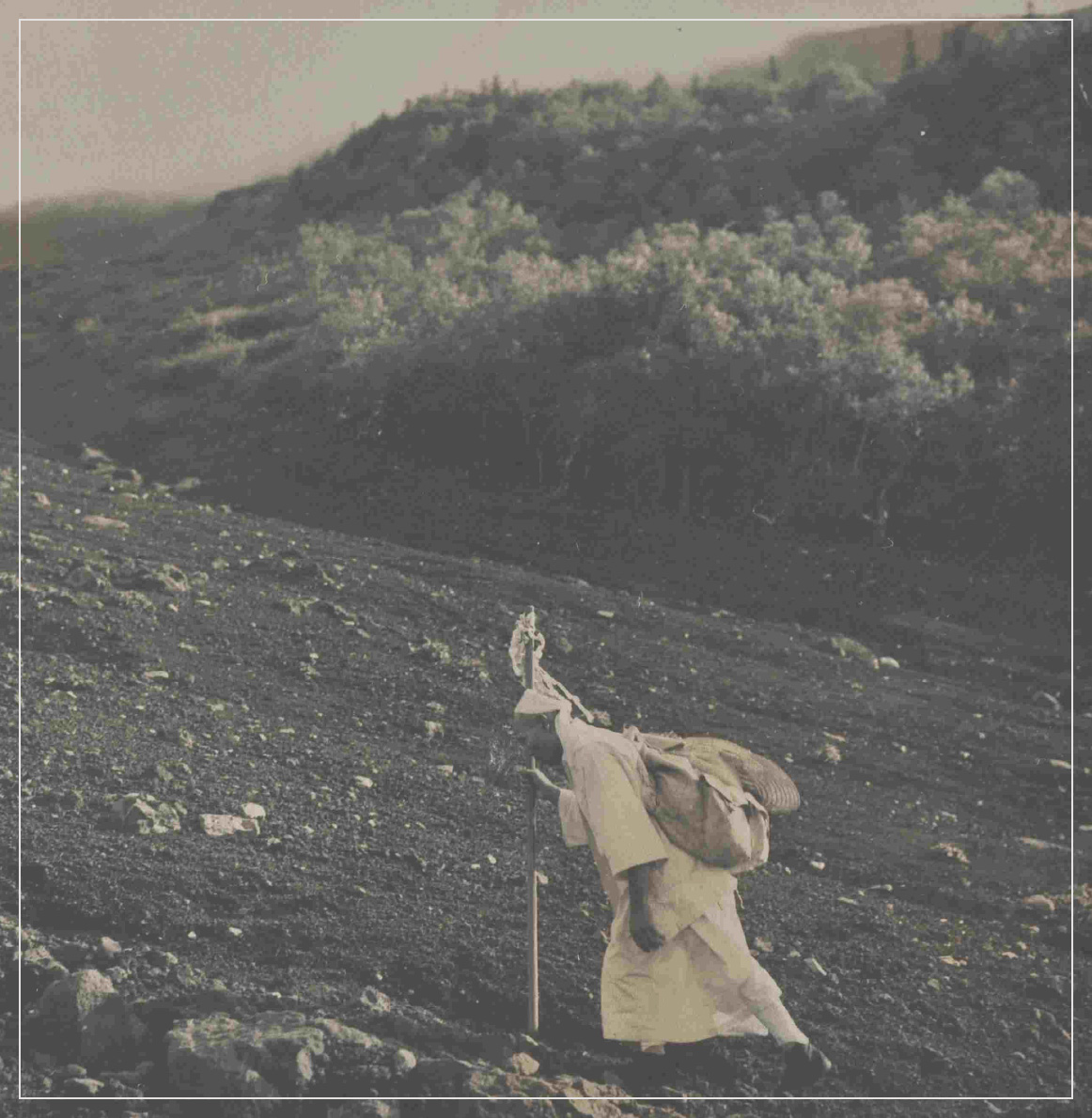
At the time, even for those with good stamina, it would take three days one way from Edo to Fujiyoshida, and at least two days round trip from the city to the summit, making the journey a total of eight days (assuming you were lucky enough to have good weather); a journey that took time and money unimaginable today.
*This tour departs from Fujiyoshida City, at the foot of Mount Fuji.
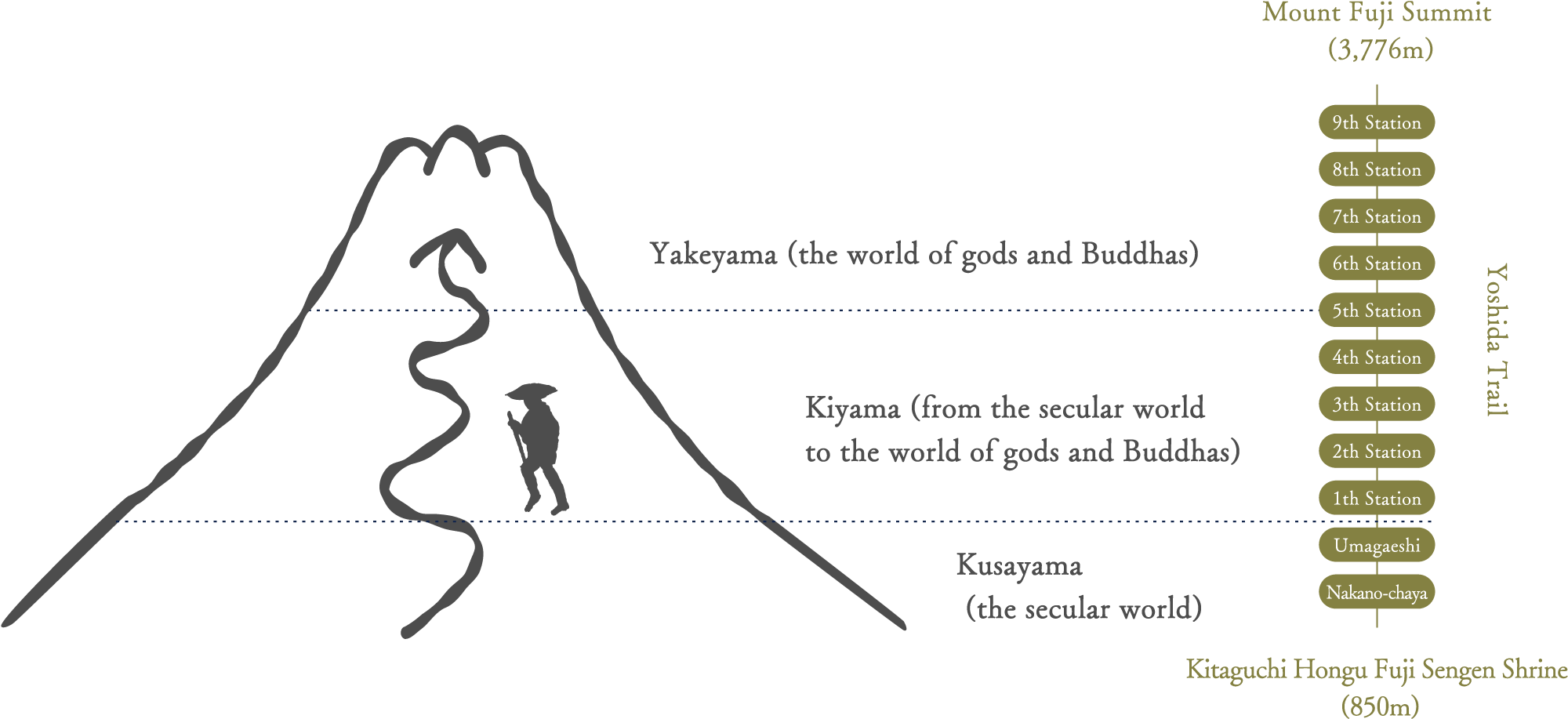
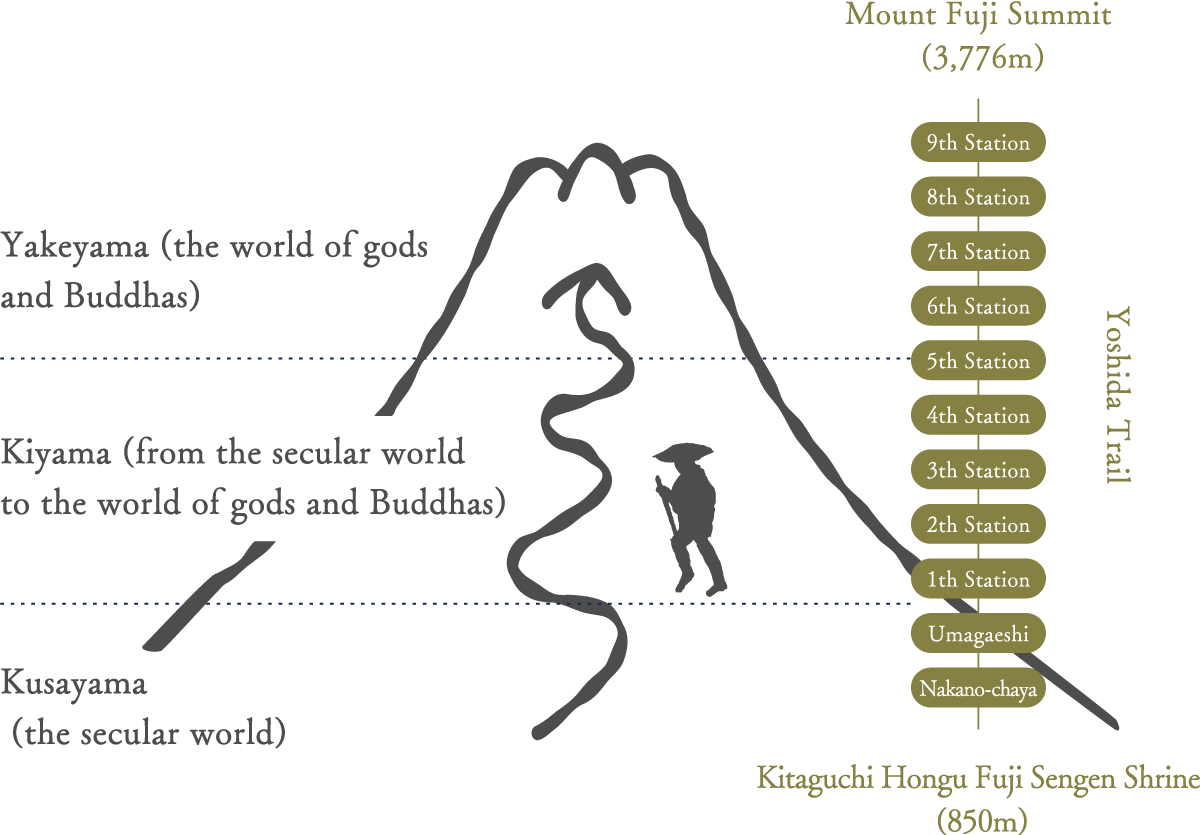
Mount Fuji has long been divided into three areas: Kusayama, Kiyama, and Yakeyama, each with its own distinct landscape and religious significance. Kusayama is the secular world at the base of the mountain, Kiyama, the forested area, is the transition from the secular world to the world of gods and Buddhas, and Yakeyama, the treeless area, is the world of gods and Buddhas. The current stations are based on these divisions.
Experience the three pillars
that make up Fuji-ko
-

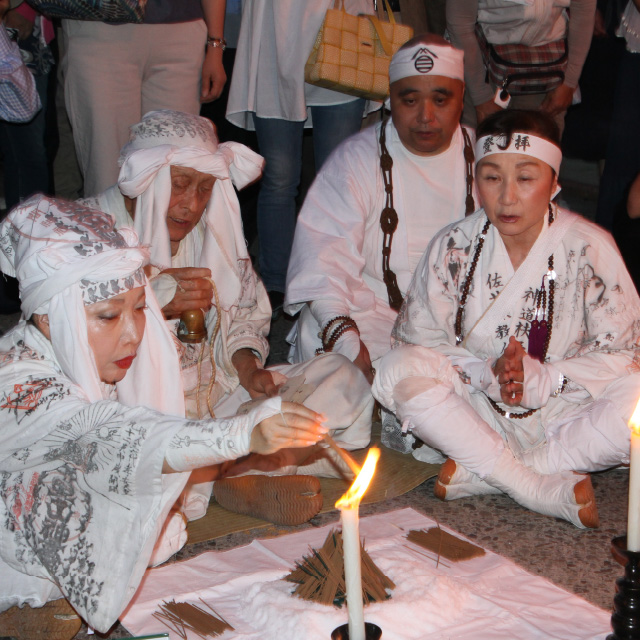
-
Experience "prayer" at an Oshi's house
Oshi (master) is a guide who welcomes Fuji-ko believers based on the faith of Mt. Fuji, arranges accommodation and climbing, and provides religious instruction. They have played an important role in supporting the culture of Fuji-ko faith by not only providing accommodation, but also imparting knowledge on how to worship and performing purification rituals. In the past, many Oshi lived in Fujiyoshida City, and Oshi houses (Oshi-no-ie) that welcomed kosha (Fujiko Groups) lined the street in Kamiyoshida. The number of Oshi has decreased significantly today, but with this plan, you can visit the homes of Oshi, which have high historical and cultural value, and experience "prayer" by chanting the Fuji-ko scriptures.
-

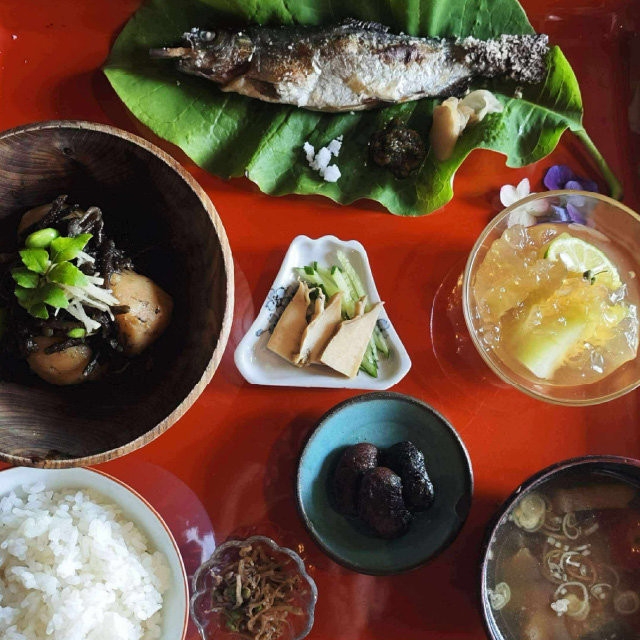
-
Dining Experience at an Oshi House
As part of the hospitality towards Fujiko followers, Oshi homes served meals tailored to those climbing Mount Fuji. The meals, made with local seasonal ingredients and preserved foods, as well as seafood brought by the followers, were befitting the believers' "journey of rebirth." Each Oshi home had its own unique flavor, cooking style, presentation, and presentation.
This plan offers a variety of interpretations of the Oshi’s traditional dishes. Enjoy a special dining experience you can only experience here.
-

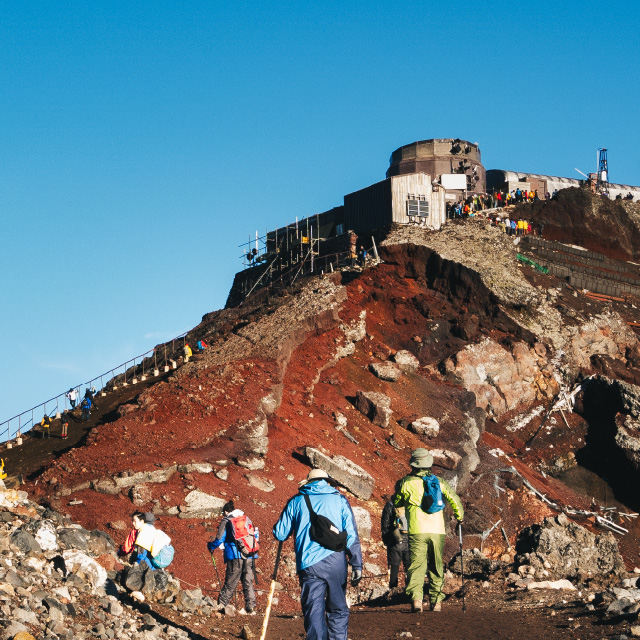
-
A guided tour of Mount Fuji
by a specialist guide with extensive knowledge of both geography and cultureAlthough Mount Fuji can be climbed alone, hiking with a guide will allow you to gain a deeper understanding of the nature, topography, and vegetation, and to appreciate its charm even more.
In this plan, a specialist guide who is well versed in both geography and culture will guide you around the Yoshida Trail and its surrounding areas. By walking along the old Fujiko trails that are unknown to ordinary climbers, while listening to historical anecdotes, you will be able to relive the religious journeys of the past.
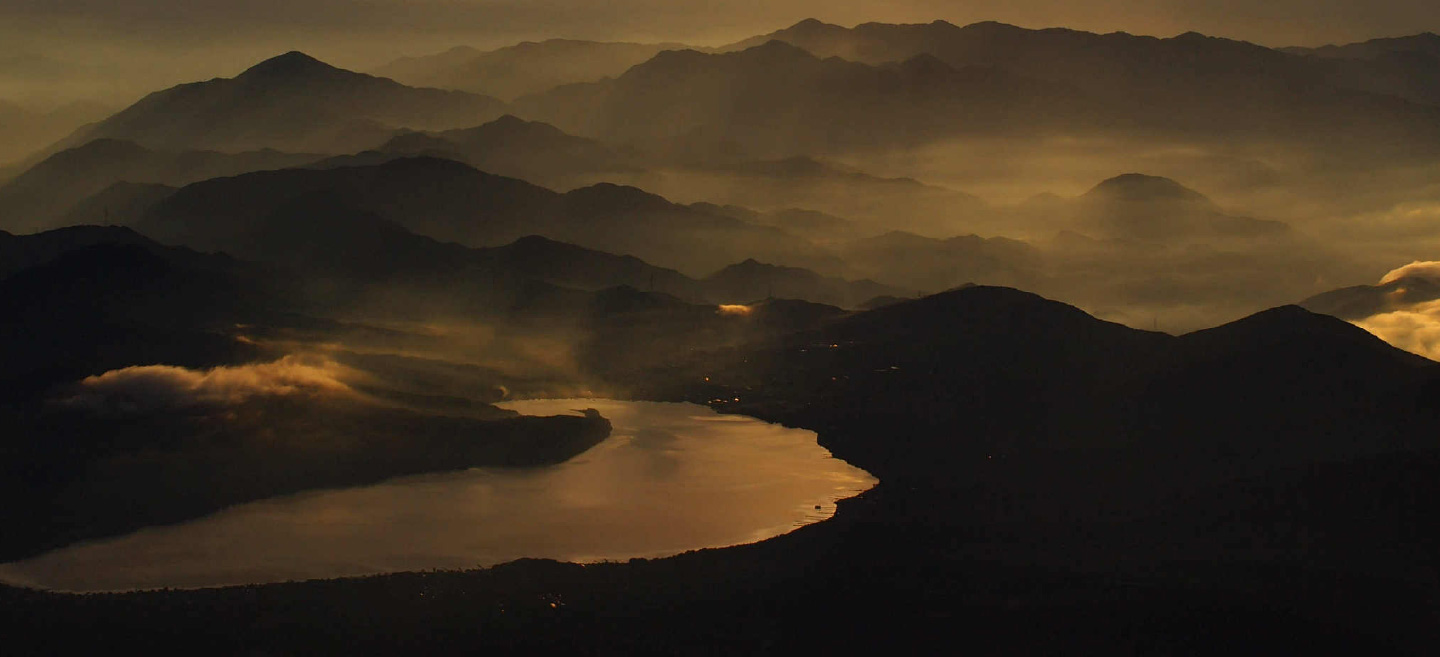
Three Plans to Choose
from for Your Itinerary
PLAN 1 | 3 days, 2 nights
From Oshimachi to the Summit
Experience modern-day Fujiko
by walking along the path of faith
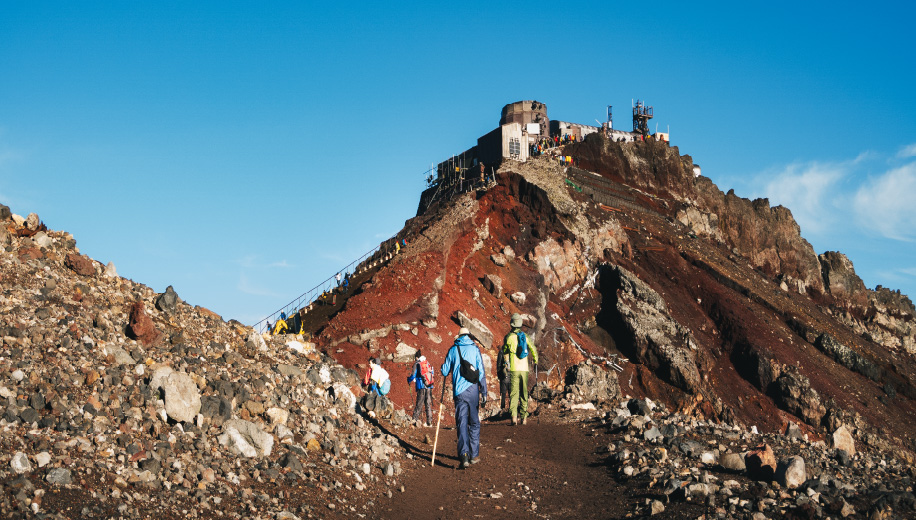
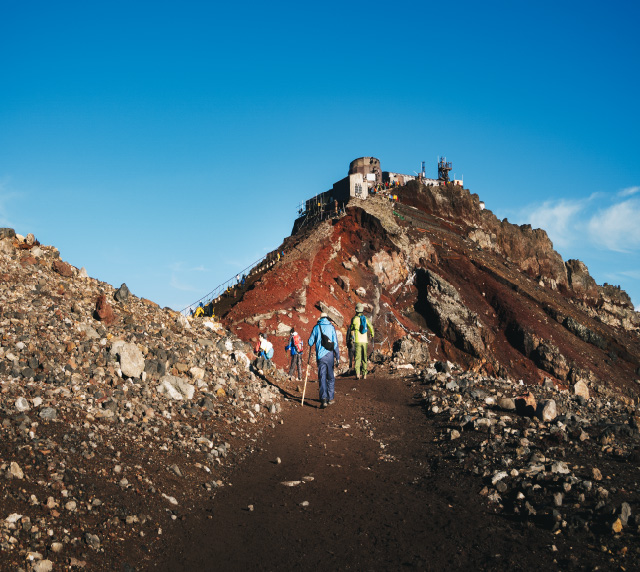
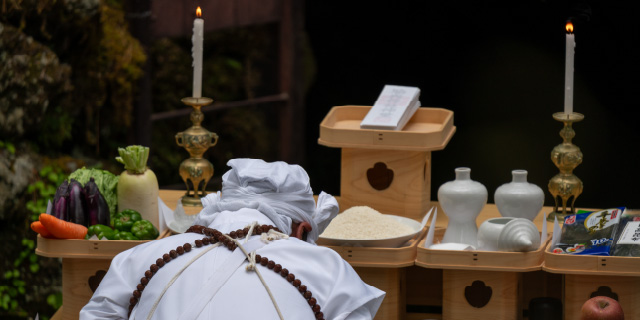
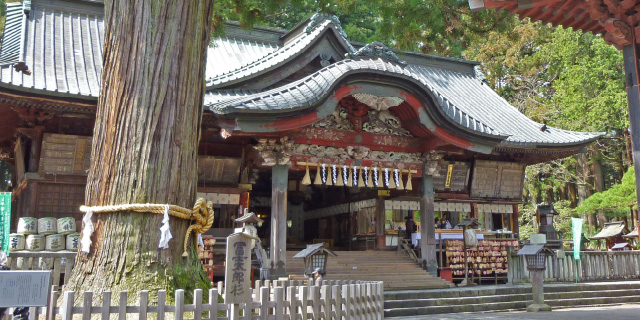
This three-day, two-night plan takes you up the Yoshidaguchi Trail, the same trail taken by Fuji-ko followers, with a guide, to the summit of Mount Fuji. The Yoshidaguchi Trail is dotted with relics that tell the history of Mount Fuji worship, but since the opening of the Fuji Subaru Line in 1962, the number of climbers hiking this route has drastically decreased.
On this plan, you'll experience Oshi culture in Fujiyoshida, the “Oshi Town" (Oshimachi) that served as a hub for Mount Fuji worship, stop by the Yoshida Tainai lava tree molds where Fuji-ko followers are said to have purified their bodies and minds, and then walk along the historic Yoshida Trail to the summit to watch the sunrise. This is a fulfilling pilgrimage plan that allows you to relive the "rebirth" sought by former followers.
Itinerary

Prices & Participation Requirements
- Period:
- July 1st - September 10th
- Meeting Location:
- Mt. Fuji Station (Fujikyu Railway Line)
- Participation Fee:
- ¥125,000 - ¥249,000 per person
※Prices vary depending on the number of participants
- Number of Participants:
- 2-6
PLAN 2 | 2 days, 1 night
Stay at an Oshi house and experience the essence of Oshi culture
up to Umagaeshi on Mt. Fuji.
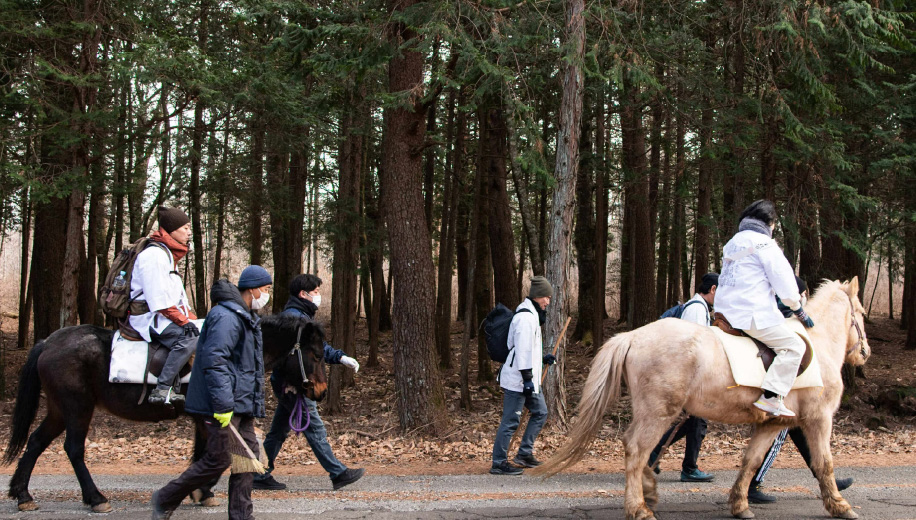
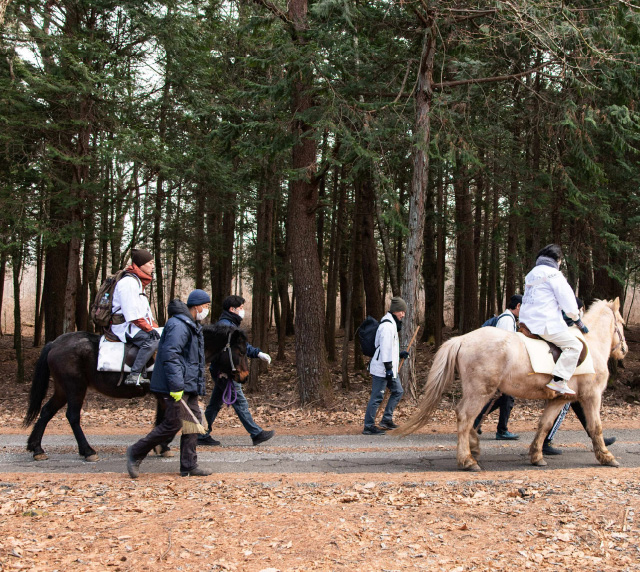
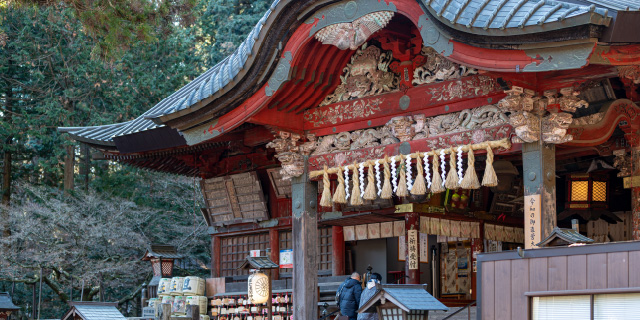
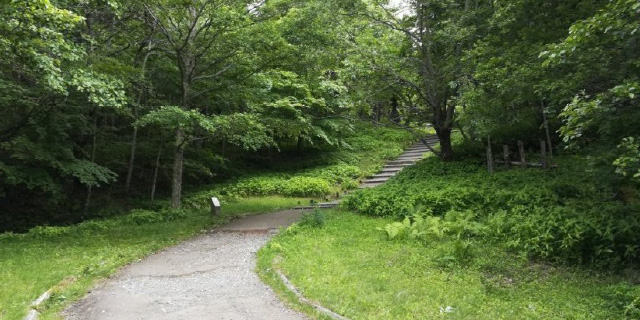
This two-day, one-night plan starts at Kitaguchi Hongu Fuji Sengen Shrine and ends the next day at Umagaeshi, near the first station of the Yoshidaguchi hiking trail. Experience Oshi culture through chanting Fujiko scriptures (prayer) and dining on food from the Oshi home, and stop by the Yoshida Tainai lava tree molds, considered a sacred site for Fujiko. You can also enjoy a horseback riding experience, a traditional means of transportation, from Nakanochaya to Umagaeshi. You'll relive the pilgrimages of yesteryear.
As this tour does not involve climbing to the summit or the fifth station, it is suitable for those with physical disabilities or who have difficulty adjusting their itinerary. It operates year-round.
Itinerary
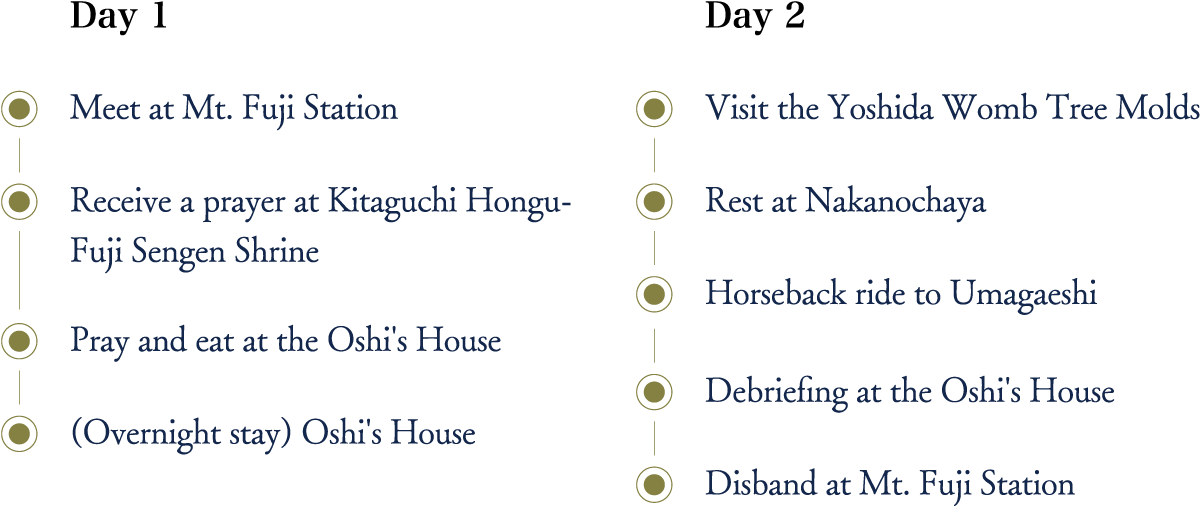
Prices & Participation Requirements
- Period:
- Year-Round
- Meeting Location:
- Mt. Fuji Station (Fujikyu Railway Line)
- Participation Fee:
- ¥85,000 - ¥150,000 per person
※Prices vary depending on the number of participants
- Number of Participants:
- 2-6
PLAN 3 | one day trip
Learn about Fuji-ko at the Oshi House
and experience "prayer" and the hospitality cuisine of the Oshi's house
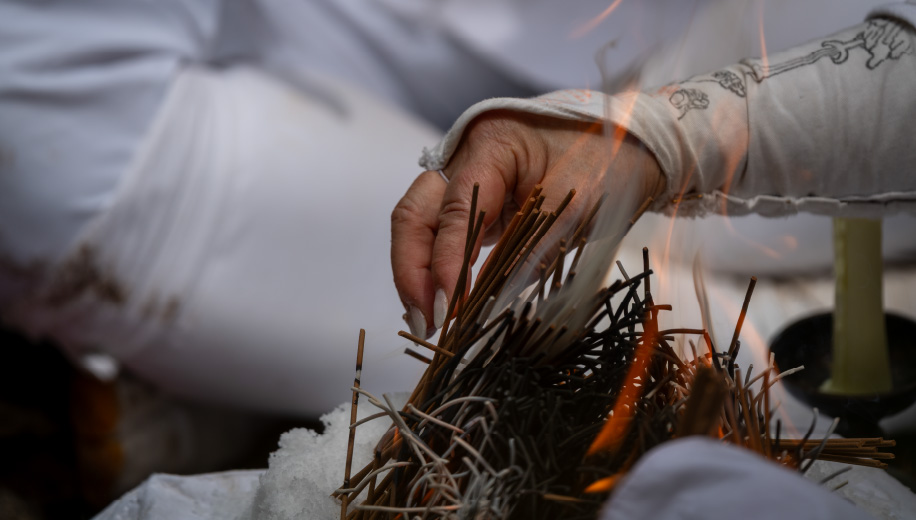
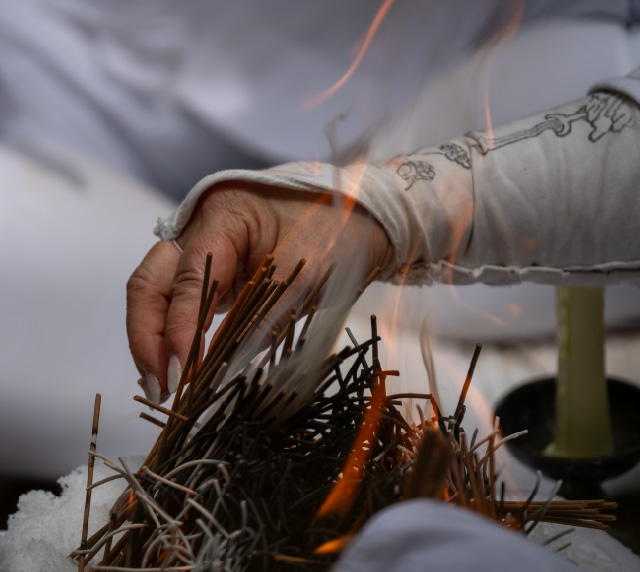
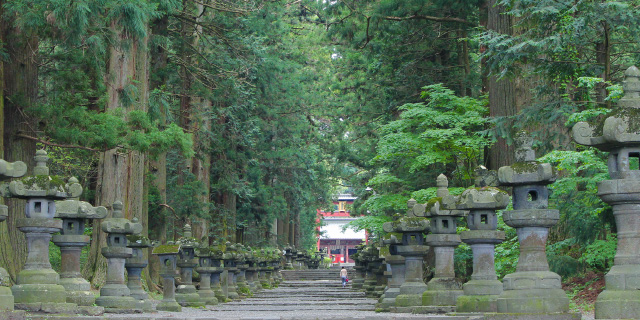
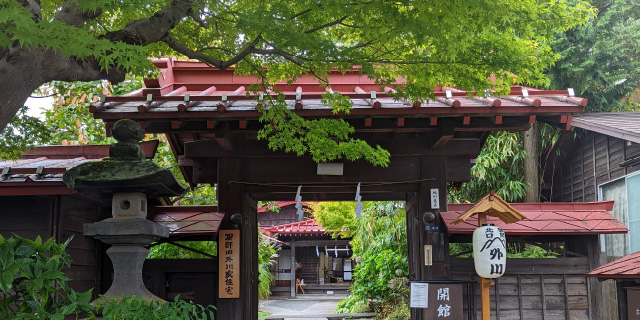
This is a one-day plan to visit an Oshi House of high historic and cultural value, and learn about the history and culture of Oshi and Fuji-ko. After listening to a lecture on Oshi culture and the life of an Oshi, you will also experience "prayer" by chanting Fuji-ko scriptures and printing a red seal on the robe once worn by Fuji-ko believers (you can take the robe home as a souvenir). After that, you will enjoy a food experience! Enjoy the Oshi house's cuisine made with local ingredients while talking with the people who continue to protect the Oshi house. After the experience at the Oshi house, a specialist guide will take you to Kitaguchi Hongu Fuji Sengen Shrine, the starting point of the “journey of rebirth.”
→ (Daikokuya) Fujiyoshida: Mt. Fuji Pilgrimage Tour with Lunch
→ (Kikuyabou) Fujiyoshida: Mt. Fuji Pilgrimage Tour with Lunch
→ (Zuzuya) Fujiyoshida: Mt. Fuji Pilgrimage Tour with Lunch
Itinerary
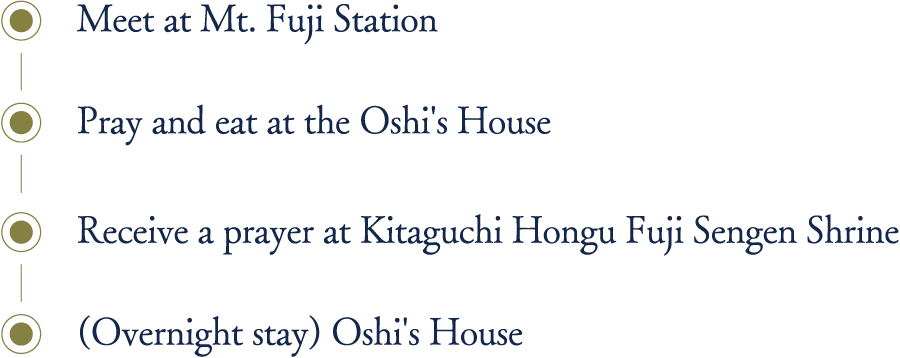
Prices & Participation Requirements
- Period:
- Year-Round
- Meeting Location:
- Mt. Fuji Station (Fujikyu Railway Line)
- Participation Fee:
- ¥20,000 - ¥30,000 per person
※Prices vary depending on the number of participants
- Number of Participants:
- 4-8
About Fujiyoshida City
Fujiyoshida City in Yamanashi Prefecture is a popular destination for both domestic and international tourists, serving as a base for climbing Mount Fuji. The city also boasts a 1,000-year-old textile industry. Surrounded by the Fuji Five Lakes, including Lake Kawaguchi and Lake Yamanaka, people visit for various purposes such as mountain climbing, culture, and leisure. In recent years, many events have been held, including the autumn festival "Hataori Machi Festival" and the textile arts festival "FUJI TEXTILE WEEK," both of which are closely tied to community development.
Access
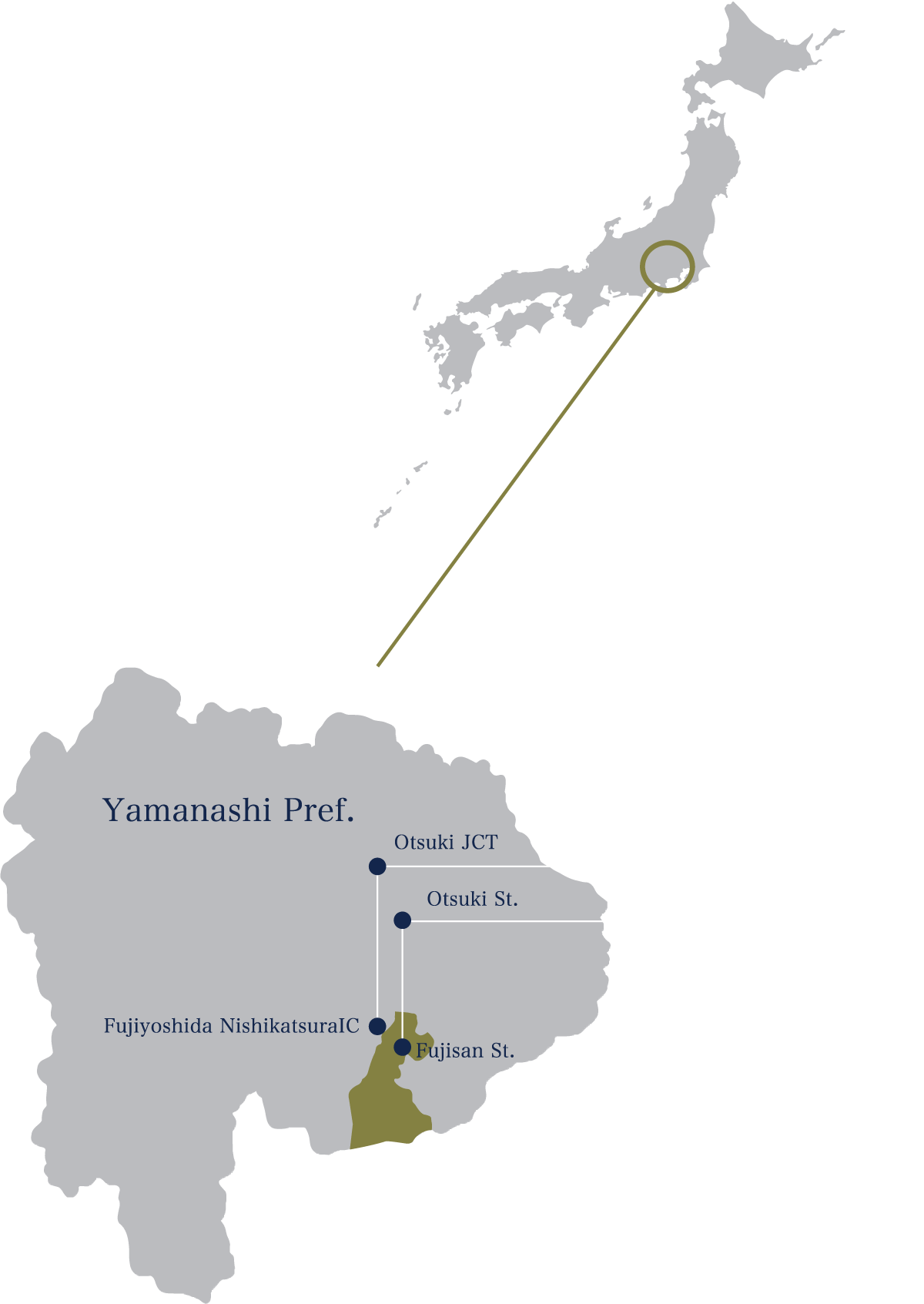
- ●By train from Tokyo
- Shinjuku Station – (JR Chuo Main Line, 1 hour 40 minutes, Limited Express 60 minutes) – Otsuki Station – (Fujikyu Railway, 50 minutes) – "Fujisan Station"
- ●By highway bus from Tokyo
- Shinjuku Expressway Bus Terminal(SEBT) – (Chuo Expressway Bus [Shinjuku – Fuji Five Lakes Line], 1 hour 45 minutes) – "Fujisan Station Bus Stop"
- ●By car from Tokyo
- Tokyo – (Chuo Expressway, 90 minutes) – Fujiyoshida Nishikatsura Smart IC




